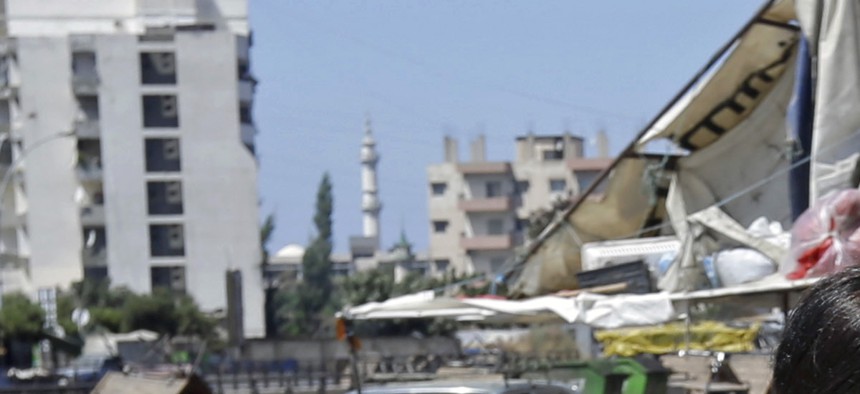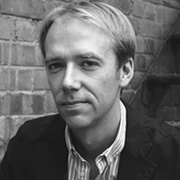
A Sunni gunman fires his AK-47 gun during clashes between pro and anti-Syrian regime gunmen in Tripoli, Lebanon. Hussein Malla/AP
The Maker of the AK-47 Says It's a 'Weapon of Peace'
Moscow-based Kalashnikov Concern just unveiled a new corporate logo and slogan aimed at promoting peace. By Jason Karaian
One of the most recognizable instruments of war is getting a makeover. Kalashnikov Concern, the company behind the ubiquitous AK-47 assault rife, unveiled a new corporate identity at a high-profile event in Moscow yesterday. A more stylized logo for the parent company was revealed, along with a somewhat Orwellian new marketing slogan—”promoting peace.”

In the original Russian, the new corporate catchphrase can translate to “weapons of peace,” an even more curious construction. The parent company’s military weapons unit, dubbed simply Kalashnikov, also got a new logo, one that, according to The Guardian , “looks more like the logo of a supermarket or chemist chain than that of an internationally renowned killing machine.”
At the Moscow event, models passed out prototypes of the rifle’s iconic curved ammunition clips featuring the gunmaker’s new logo.
This is how the company explains its new peace-centric brand identity:
Brand developers have added a double meaning to the slogan: Kalashnikov’s weapons are the most popular around the world, surpassing closes competitors by orders of magnitude based on units manufactured; at the same time, Kalashnikov weapons are made to maintain peace around the world, regionally and in particular countries—they help nations protect their sovereignty, their right for peaceful existence, their right to pick their own historic fate.
The first Kalashnikovs went into production in 1947—AK-47 is short for Avtomat Kalashnikova and the year it was first produced—and some 100 million of the rifles have since spread around the world, becoming a ubiquitous feature in conflicts large and small. The cheap, user-friendly, and reliable design has also inspired a cottage industry of clones and knockoffs , further inflating the number of rifles in use. The company officially ships its weapons to 27 countries , but you would be hard pressed to find a place on earth where the rifles haven’t made an appearance.
Inventor Mikhail Kalashnikov died in December last year, at the age of 94. In his opinion , “a firearm must be beautiful like a woman, it must fit your hands perfectly and make you want to take it.”

Despite the rifle’s popularity, it has not made for a particularly profitable business. In fact, the state-controlled company went bankrupt in 2012 . It sold a minority stake to private investors last year , and these owners stumped up 20 million rubles ($365,000) to pay for the brand revamp.
New ownership has recently rationalized the once-sprawling business, cutting down its product range and organizing it along three business lines: Kalashnikov, the military unit; Baikal, which sells hunting rifles and ships the majority of its exports to the US; and Izhmash, which specializes in sporting rifles, like the ones used in the biathlon. The company also plans to diversify away from guns and sell clothing, knives, and other products on the side.

Things were looking up for Kalashnikov earlier this year, when it signed a distribution deal to sell up to 200,000 rifles a year in the US over the next five years. But this summer the group was one of several government-controlled companies hit with sanctions by the US and the EU in retaliation for Russia’s annexation of Crimea and its role in destablizing Ukraine. These large and lucrative markets are now essentially off-limits, which also seems to have put Kalashnikov’s planned sponsorship deal with action star Steven Seagal on ice.
Last month, Kalashnikov signed export deals with Malaysia and Thailand, which will help “neutralize the negative impact of the sanctions,” the company said. It added yesterday in in a statement (link in Russian) that India and Egypt are the “most promising” new markets now on its radar.
Last year, Kalashnikov made a loss of 1.7 billion rubles on revenue of just over 2 billion. The company says that sales will surge to more than 9 billion rubles this year and some 24 billion in 2020. Whether a new logo is the key to unlock that sort of growth is questionable, but a group director says that it hopes the refreshed Kalashnikov brand will be “as recognized and valuable” as Apple’s some day.
